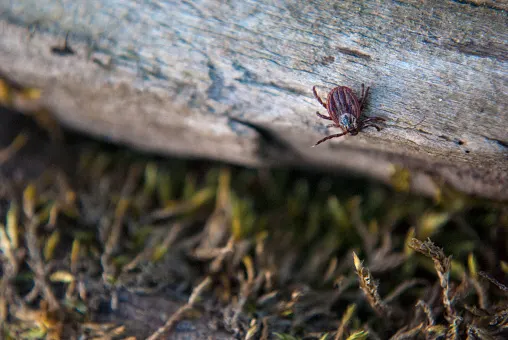
Why ticks aren't just a summer concern in Canada
During the summer, the routine is familiar for cottagers: dress in protective clothing before stepping outside, check for ticks after coming back in, and, should a tick bite occur, lookout for the tell-tale bullseye rash that may signal Lyme disease. But what about in the colder months, when cottagers trade wading through forests with wading through snow? Where do the ticks go then?
First off, it’s important to recognize that not all tick activity is bad. “There are many of different species of ticks in Canada.” says Dr. Katie Clow, an Assistant Professor at the University of Guelph who studies black-legged ticks and the risk of Lyme disease in Ontario. “Black-legged ticks are the only species of tick in eastern Canada that transmit the Borrelia burgdorferi bacteria, which causes Lyme disease.”
Though people may be most concerned about ticks through the summer, in reality, “Fall is peak activity time for adult black-legged ticks. It’s when they are actively looking for a host to take a blood meal and reproduce,” says Clow.
And while they may not make a den to hibernate in or build up a cache to keep themselves fed, ticks do still have plans for winter.
“Black-legged ticks spend most of their life in the leaf litter of the forest. This is also true during periods when it is very cold,” says Clow.
Rather than dying off, the ticks remain well-protected under the leaf litter and snow.
Still, Clow advises it’s good to stay alert: “If you lose a lot of snow cover, ticks can become active again. We do receive reports of tick bites, particularly when there are warm spells (like the ‘January thaw’),” she says. “In general though, winter is a much lower risk time.” Luckily, cottagers can rest easy knowing that ticks are not actively moving into new areas during cold periods.
Reports on the number of Lyme disease cases can vary from province to province.
In the meantime, winter tick safety is much the same as in the summer. If you are out during any warm spells with snow melt, cover up and do a thorough tick check on yourself and your pets. “If you are in an area that doesn’t get very cold in the winter and the temperature fluctuates a lot, pet owners can consider keeping their dogs on veterinary-prescribed tick preventative year-round, or for a longer portion of the year,” adds Clow.
In 2017, the federal government pledged $4 million to Lyme disease research, and new research earlier this year suggested that while improving, Lyme disease cases are still under-reported.
This article was originally published on CottageLife.com by Alysha Vandertogt. Minor edits made by The Weather Network to remove dated information.